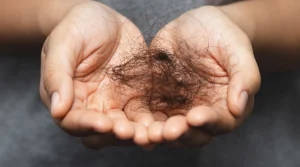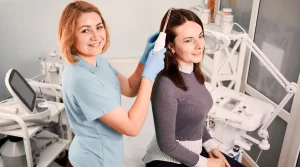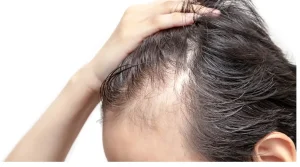Hey there! If you’ve been noticing more hair on your brush lately or catching glimpses of your scalp where there used to be thick hair, you’re not alone. Pattern baldness affects millions of people, and while it might feel isolating, you’ve got plenty of company on this journey – plus some real solutions to explore.
What’s Really Happening to Your Hair?
Let’s break down pattern baldness (or as scientists call it, androgenetic alopecia – but let’s stick with pattern baldness, shall we?). Think of it like a slow-motion transformation of your hairline that happens differently depending on whether you’re a guy or gal.
For the Guys
Picture your hairline playing a game of reverse Tetris. It usually starts retreating at your temples, creating that classic “M” shape that so many men are familiar with. Some guys also notice their crown getting a bit sparse – you know, that spot you can only see with a second mirror or an awkward selfie angle.
For the Ladies
Ladies, your experience is typically more subtle but no less concerning. Instead of the hairline march-backward, you might notice your part line getting wider (time to retire that ruler-straight part?) and your ponytail getting thinner. It’s like your hair is slowly turning down the volume, going from full-blast to more of a quiet whisper.
The “Why” Behind the Goodbye
Ever wonder why this is happening? Well, it’s complicated (isn’t everything?), but here are the main culprits:
Genetics (Thanks, Mom and Dad!)
- Your genes can make your hair follicles super sensitive to DHT (that’s a hormone that’s not playing nice with your hair)
- If your family photos show a pattern of thinning hair, you might’ve inherited more than just your grandmother’s eye color
Hormonal Hijinks
- For women: Pregnancy, postpartum, and menopause can all throw your hair for a loop
- Thyroid acting up? Your hair might be the first to complain about it
Lifestyle Plot Twists
- Stress (the unwanted guest that never leaves)
- Diet (your hair is kind of high-maintenance – it needs those nutrients!)
- Medical conditions and certain medications can crash the hair party too
The Good News: You’ve Got Options!
Here’s where things get exciting – there are actually quite a few ways to tackle this:
The Medicine Cabinet Approach
- Topical treatments: Minoxidil (Rogaine) is like miracle-grow for your scalp
- Oral medications: Finasteride (Propecia) tells those hair-losing hormones to take a hike
- Anti-androgens: These can help balance things out, especially for the ladies
The Surgical Solution
Think of hair transplants as relocating hair from where you don’t need it as much to where you really want it. It’s like crowd control for your scalp!
The Lifestyle Upgrades
- Stress less (easier said than done, we know)
- Eat better (your hair is hungry for iron, protein, and vitamins)
- Be gentle with your styling (no more tight ponytails!)
Real Talk: Your Burning Questions Answered
“Will these treatments work for me?” Like your favorite jeans, results aren’t one-size-fits-all. Early treatment usually gets better results.
“How long until I see changes?” Give it 3-6 months – your hair operates on island time when it comes to showing results.
“Is this forever?” Most treatments are like gym memberships – you need to keep at it to maintain results.
The Bottom Line
Look, dealing with hair loss isn’t fun, but you’re not in this alone. While we can’t promise overnight miracles, there are real, effective treatments out there. The key is working with a professional who can help you find the right solution for your specific situation.
Ready to take control? Our team at Lasting Impression, led by Dr. Galope, specializes in cutting-edge, non-surgical solutions for all types of hair loss. We’re not just treating hair – we’re helping restore your confidence, one follicle at a time.
Remember: Your hair might be thinning, but your options for treating it are anything but! Whether you’re just starting to notice changes or you’ve been dealing with this for a while, there’s never been a better time to explore your options. Let’s work together to find the solution that’s right for you.





